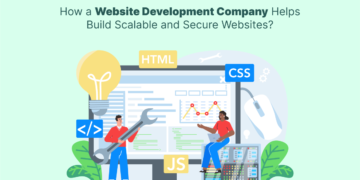Introduction
In today’s fast-paced digital world, users expect instant answers. If your website can’t provide them, chances are your visitors will bounce. This is where a chatbot for websites becomes a game-changer. Not only do chatbots handle repetitive FAQs efficiently, but they also play a vital role in capturing leads even when your sales team is offline.
This guide explains how chatbots are transforming modern websites particularly for small businesses, SaaS products, and service providers and how you can set one up to automate your support and grow your business.
What Is a Chatbot for Websites?
A chatbot for websites is an automated chat interface integrated into your site that interacts with users in real time. It mimics human conversation and can answer questions, guide visitors, book appointments, collect emails, and even process orders depending on how it’s configured.
Unlike live chat (which requires a human agent), chatbots operate 24/7, never take breaks, and can handle multiple users simultaneously.
Why Businesses Need Chatbots in 2025
Here’s why more businesses are adopting website chatbots:
1. Instant FAQ Resolution
Instead of navigating through multiple pages or searching for answers, users can ask the chatbot questions like:
- “What are your delivery charges?”
- “Do you offer international shipping?”
The chatbot instantly pulls answers from a predefined FAQ database.
2. 24/7 Lead Capture
Even after business hours, a chatbot can:
- Ask qualifying questions
- Collect contact details
- Offer downloadable resources (e.g., brochures or pricing sheets)
This ensures you don’t lose potential leads just because no one was available to respond.
3. Reduced Human Support Load
Businesses can reduce repetitive tickets like:
- Password resets
- Refund policy explanations
- Store hours or appointment booking
This allows human agents to focus on more complex queries.
4. Improved Conversion Rates
Chatbots can be personalized to:
- Greet returning users
- Recommend services/products
- Offer discount codes based on user behavior
All of this contributes to higher engagement and conversion.
Types of Website Chatbots
There are 3 main types of chatbots for websites:
| Type | Description | Best For |
| Rule-Based Bots | Uses if-then logic and decision trees | Simple FAQs and form filling |
| AI-Powered Bots | Uses NLP (Natural Language Processing) and machine learning | Complex interactions and conversational flows |
| Hybrid Bots | Combines rule-based + AI | Businesses that need some human fallback or rich workflows |
For most startups and SMEs, starting with a rule-based or hybrid chatbot is both cost-effective and efficient.
Key Features to Look For in a Chatbot for Websites
When selecting a chatbot, focus on these features:
- FAQ Automation: Upload or integrate your FAQ page.
- Lead Forms: Automatically collect email, phone, and preferences.
- CRM Integration: Sync with tools like HubSpot, Salesforce, or Mailchimp.
- Multilingual Support: If your audience is global.
- Custom Triggers: Engage users based on scroll depth, page, or time.
- Analytics Dashboard: Measure conversations, conversions, drop-offs.
Use Case Examples
Let’s look at real-world examples across industries.
1. Education Consultancy
A student visits the site at 11 PM to ask:
“How can I apply to German universities?”
The chatbot replies with steps, documents list, and offers a free consultation link. It also captures their email for follow-up.
2. E-commerce Store
A user is browsing shoes. The bot pops up:
“Need help with sizes or delivery options?”
User clicks, selects “size guide” → gets instant help. Then the bot offers a discount code in exchange for email signup. Lead captured.
3. Healthcare Provider
A patient wants to book an appointment.
The bot asks:
- Preferred date
- Type of doctor
- Contact info
Appointment is logged in the system instantly.
How to Set Up a Chatbot for Your Website
Here’s a simple 5-step setup plan:
Step 1: Define the Goal
What do you want the chatbot to do?
- Answer FAQs?
- Capture emails?
- Book calls?
Start with 1–2 clear goals.
Step 2: Choose a Platform
Popular tools in 2025 include:
- Tidio
- Landbot
- BotBrain.co
- ChatBot.com
- Intercom
- Drift (for B2B/SaaS)
Most offer no-code interfaces for setup.
Step 3: Build the Conversational Flow
Use simple logic:
- Welcome message
- Ask what user needs
- Guide them to the correct answer or collect lead info
Example:
Hi there! What can I help you with today?
[Shipping Info] [Pricing] [Book a Call]
Step 4: Integrate into Your Website
Copy and paste the widget script into your site’s HTML. Most platforms provide code snippets or WordPress plugins.
Step 5: Monitor & Optimize
- Check chatbot analytics weekly
- Improve unanswered queries
Add new FAQs or flows as needed
Common Mistakes to Avoid
Avoid these when using a chatbot for websites:
- Making it hard to reach human support
- Overloading the bot with too many options
- Not updating your FAQs
- Failing to test on mobile
- Ignoring conversation analytics
Future Trends in Website Chatbots (2025 & Beyond)
- Voice-enabled chatbots will begin merging with website experiences.
- AI memory will help bots recall past conversations.
- Hyper-personalization: Bots will greet users by name and suggest content/products based on history.
- Lead scoring with AI: Chatbots will qualify leads and sync with sales pipelines in real-time.
- Integration with WhatsApp & Instagram chat platforms will bridge multi-channel communication.
In 2025, having a chatbot for websites is no longer optional it’s a core part of any smart online strategy. Acting as your always-on assistant, a chatbot helps answer common questions, capture leads around the clock, improve the user journey, and drive conversions without manual effort. Whether you’re running a consultancy, online store, SaaS platform, or service-based business, starting with a simple, focused chatbot can deliver real value from day one and scale as your needs grow.


























